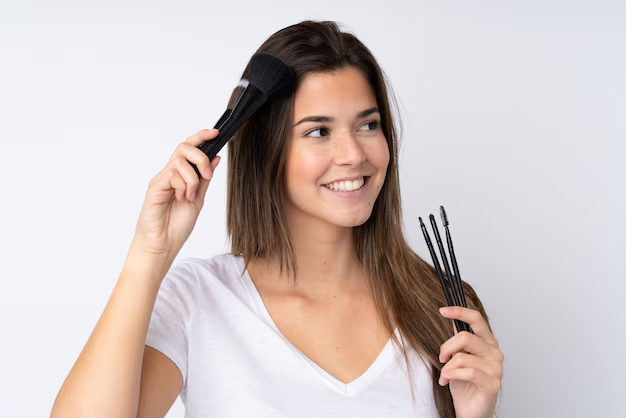Unveiling the Truth: Can Hair Dye Really Cause Cancer?
Many of us strive to express ourselves through personal style, and changing hair color is a popular way to do just that. However, as exciting as it may be to experiment with bold reds or subtle highlights, some people pause and wonder—does hair dye carry any health risks? Specifically, does it increase the risk of cancer? Let's delve into this question, examining scientific perspectives, understanding potential risks, and exploring safe practices.
The Connection Between Hair Dye and Cancer: What Science Says
The potential link between hair dye and cancer has been a subject of study for decades. Concerns primarily revolve around the chemicals found in both permanent and semi-permanent dyes. Understandably, health-conscious consumers are eager to learn whether these products pose a significant risk.
Permanent vs. Semi-Permanent Hair Dyes
Permanent Hair Dyes: These dyes result in a long-lasting color, achieved through a chemical reaction involving ammonia, hydrogen peroxide, and p-phenylenediamine (PPD). Concerns arise due to PPD's potential carcinogenic properties, which have been evaluated in laboratory settings.
Semi-Permanent Hair Dyes: These dyes coat the outer shaft of the hair, allowing for less permanent color alteration. Though containing fewer harsh chemicals, they still raise concerns about exposure to potentially hazardous ingredients.
Studies and Findings
Numerous studies have aimed to explore whether using hair dye increases the risk of cancer. The results, however, are mixed and often inconclusive:
Breast Cancer: Some studies suggest a weak link between hair dye use and breast cancer, but these findings are often contested due to factors such as small sample sizes and lack of consistent data.
Bladder Cancer: Historically, hair dye manufacturers employed aromatic amines, chemicals that were later shown to be carcinogenic. Though no longer used in modern dyes, some older studies highlighted a potential connection between hair dye and bladder cancer.
Hematologic Cancers: Several studies have examined connections between hair dye and blood cancers like leukemia and lymphoma, with mixed outcomes that do not definitively establish causation.
Regulatory Perspective
Regulatory agencies like the Food and Drug Administration (FDA) and the European Union (EU) closely monitor and regulate chemicals used in hair dyes. While products on the market today meet safety standards, ongoing research and surveillance aim to ensure consumer safety.
Understanding Risk: Key Factors in Cancer Development
When discussing the potential cancer risks associated with hair dyes, it's important to consider factors influencing cancer development.
Genetic Predisposition
Genetic factors can play a significant role in determining cancer risk. If you have a family history of cancer, it’s crucial to factor this into your risk assessment.
Lifestyle Choices
Diet, exercise, and smoking significantly impact cancer risk. Those concerned about hair dye might evaluate these lifestyle factors as part of a broader health strategy.
Frequency of Use
Regular, long-term exposure to hair dye may elevate risk compared to occasional use. Moderation is essential to minimizing potential risk while enjoying hair color treatments.
Staying Safe: Tips for Using Hair Dye
While ongoing research aims to provide clearer answers, those who regularly use hair dye can take specific steps to mitigate risk.
Opt for Safer Alternatives
Natural Dyes: Henna and other plant-based dyes offer an alternative to chemical-laden products. They may not provide as vibrant a color range, but they significantly reduce chemical exposure.
Chemical-Free Products: Look for hair dyes labeled as free from ammonia and PPD. These minimize exposure to potentially harmful chemicals.
Follow Safe Application Practices
Patch Tests: Conduct a patch test before applying dye to your entire scalp. This helps identify potential allergic reactions to any product ingredients.
Proper Ventilation: Ensure the room is well-ventilated to minimize fume inhalation during the dyeing process.
Protective Gear: Use gloves and barrier creams to prevent skin absorption.
Limit Frequency
Consider extending the time between touch-ups. This not only limits chemical exposure but can also be kinder to your hair.
The Bigger Picture: Understanding Personal Risk and Making Informed Decisions
Hair dye is often just one component of our personal beauty routines. Hence, understanding its role in overall health is critical.
Consult Health Professionals
For personalized advice, consult a healthcare professional, particularly if you have a family history of cancer or other genetic risks.
Educate Yourself
Stay informed about the ingredients in your hair care products and their potential health impacts. Labels and consumer watchdog groups can offer valuable insights into safe options.
Balance and Moderation
Finding a balance that prioritizes both aesthetic desires and health considerations offers peace of mind. Being informed empowers you to make choices aligned with your personal risk tolerance.
Understanding the potential risks of hair dye is crucial, but context is equally important. While some studies suggest a possible link between hair dye and cancer, the evidence is not definitive. By staying abreast of ongoing research, choosing safer options, and practicing safe application techniques, you can embrace personal style safely and confidently.
Key Takeaways: Unlocking Safe Hair Dye Practices
🔍 Mixed findings exist regarding hair dye and cancer risk, necessitating ongoing research for clearer conclusions.
🌱 Consider natural dyes or chemical-free products to minimize health risks associated with hair dye.
🧤 Practice safe dye application by using gloves, ensuring ventilation, and performing patch tests.
⏳ Limit dye use frequency to reduce chemical exposure while enjoying your desired style.
👩⚕️ Consult with healthcare professionals if genetic or personal health factors elevate your cancer risk.
By understanding both the risks and safe practices associated with hair dye use, you can make informed decisions that align with your beauty goals and health priorities.

Related Articles
- Are Breast Cancer Lumps Painful
- Are Chills a Sign Of Cancer
- Are Colon Spasms a Sign Of Cancer
- Are Lytic Lesions Always Cancer
- Are Polyps Cancer
- Can a Blood Test Detect Cancer
- Can a Ct Scan Detect Cancer
- Can a Dexa Scan Show Cancer
- Can a Gastric Emptying Scan Show Cancer
- Can a Lung Biopsy Cause Cancer To Spread